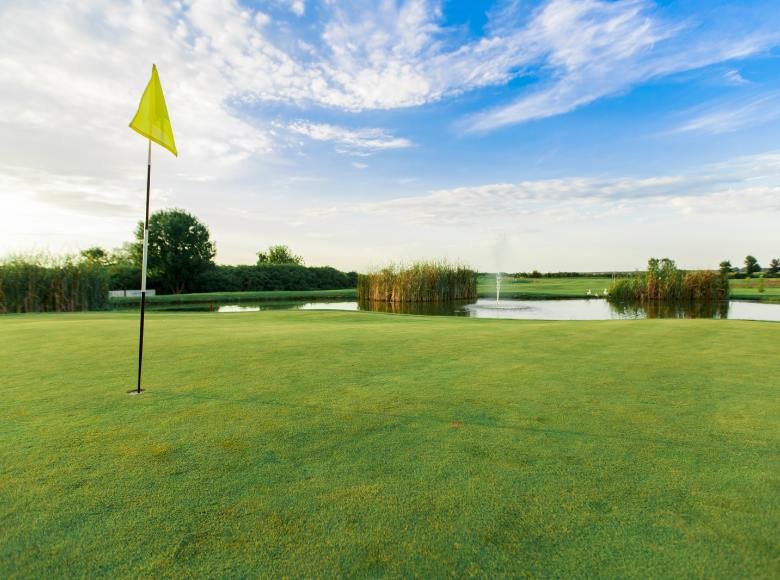The eco-friendly construction practices for sustainable Florida golf courses include a careful selection of the site and its design, efficient water management, maintenance of soil health and erosion control, selection of the right turf grass species and their maintenance, support for local biodiversity and habitat environments, and the inclusion of education and community involvement.
Golf courses are often regarded as idyllic landscapes, where nature meets leisure. In Florida, with its stunning natural beauty and unique ecosystems, creating sustainable golf courses is not just a choice, but a responsibility. To strike a harmonious balance between recreation and environmental conservation, golf course construction must embrace eco-friendly practices that minimize ecological impact and promote long-term sustainability.
Site Selection and Design
The foundation of an eco-friendly golf course lies in the careful selection of the site and its design. Conducting thorough environmental assessments prior to construction is essential. Avoiding ecologically sensitive areas such as wetlands, wildlife habitats, and flood-prone zones is critical to preserving natural biodiversity.
Incorporating native vegetation into the course design helps minimize disruption to local ecosystems. Native plants are well adapted to the local climate and require less water and maintenance, reducing the need for extensive irrigation and chemical inputs. Moreover, maintaining open spaces and corridors for wildlife movement fosters biodiversity, allowing native species to thrive alongside the golf course.
Water Management and Irrigation
Water scarcity is a pressing concern in Florida, making efficient water management a top priority for sustainable golf course construction. Employing advanced irrigation technologies such as weather-based controllers, soil moisture sensors, and precision nozzles helps optimize water use. Capturing and utilizing rainwater for irrigation and maintenance reduces the demand on local water sources.
Innovative water features, such as constructed wetlands and retention ponds, not only enhance the course’s aesthetics but also serve as natural water filtration systems. Integrating these features can mitigate the impact of nutrient runoff and contribute to water quality improvement in adjacent water bodies.
Soil Health and Erosion Control
Maintaining soil health is essential for a sustainable golf course. Practices like minimal soil disturbance during construction, contouring fairways to minimize erosion, and implementing erosion control measures such as silt fences and erosion blankets prevent sediment runoff into nearby water bodies. Incorporating organic matter into the soil through composting and topdressing enhances soil structure and promotes nutrient cycling.
Grass Selection and Maintenance

Choosing the right turf grass species is integral to eco-friendly golf course construction. Opting for drought-tolerant native grasses or hybrid varieties suited to the Florida climate reduces water consumption and chemical inputs. Moreover, selecting grass species that require minimal mowing and fertilizer applications contributes to resource conservation.
Implementing integrated pest management (IPM) practices reduces the reliance on chemical pesticides. This approach involves monitoring for pests, introducing natural predators, and using targeted treatments only when necessary. Healthy turf, achieved through proper cultural practices like aeration and overseeding, is naturally more resilient to pest infestations.
Biodiversity and Habitat Enhancement
Eco-friendly golf course construction can play a pivotal role in supporting local biodiversity. Designating areas as wildlife habitats, preserving natural wetlands, and creating buffer zones along water bodies provide sanctuaries for native plants and animals. Incorporating native flowering plants and pollinator-friendly landscapes not only beautifies the course but also supports crucial pollinator populations.
Education and Community Involvement
Engaging golfers, course staff, and local communities in sustainability efforts fosters a sense of ownership and responsibility. Educational initiatives such as nature walks, workshops, and ecological signage can raise awareness about the importance of conservation and sustainable practices. Community involvement in habitat restoration projects or tree planting events deepens the course’s positive impact beyond its boundaries.
The Importance of having Eco-Friendly Construction Practices for Sustainable Florida Golf Courses
Eco-friendly construction practices are paramount for creating sustainable Florida golf courses that balance environmental preservation and recreational enjoyment. Florida’s unique ecosystem is delicate and vulnerable to the impacts of development, making it crucial to adopt practices that minimize negative effects.
By implementing eco-friendly construction practices, golf courses can help conserve water, preserve native vegetation, and reduce soil erosion. Florida’s fragile coastal areas can be particularly affected by traditional construction methods, making eco-friendly approaches essential for maintaining the health of ecosystems and habitats.
Also, sustainable practices contribute to water conservation in a region prone to droughts. By using efficient irrigation systems and drought-tolerant turf grasses, golf courses can minimize their water footprint while maintaining lush and playable surfaces.
Eco-friendly construction practices also enhance the appeal of golf courses to environmentally conscious players and residents. They showcase a commitment to responsible land management, attracting those who value natural beauty and sustainability.
Thus, adopting eco-friendly construction practices for Florida golf courses is not just an environmental necessity, but a strategic investment in the long-term viability, reputation, and enjoyment of these recreational spaces.
Eco-friendly construction practices for sustainable Florida golf courses align with the state’s unique environmental characteristics and its commitment to conservation. By considering site selection, water management, soil health, grass selection, and promoting biodiversity, golf courses can minimize their ecological footprint while providing enjoyable recreational spaces. Embracing these practices not only enhances the beauty and playability of the course but also preserves the natural splendor of Florida’s landscapes for generations to come. Balancing golf’s traditions with environmental stewardship is the path toward a greener and more sustainable future for Florida’s golf courses.
Choose DTE Golf® as your partner for eco-friendly construction practices, transforming your vision of sustainable Florida golf courses into reality. With proven expertise in environmentally conscious design, resource management, and community engagement, DTE Golf® creates harmonious landscapes that thrive both ecologically and recreationally, setting new standards for golf course sustainability in the Sunshine State.
